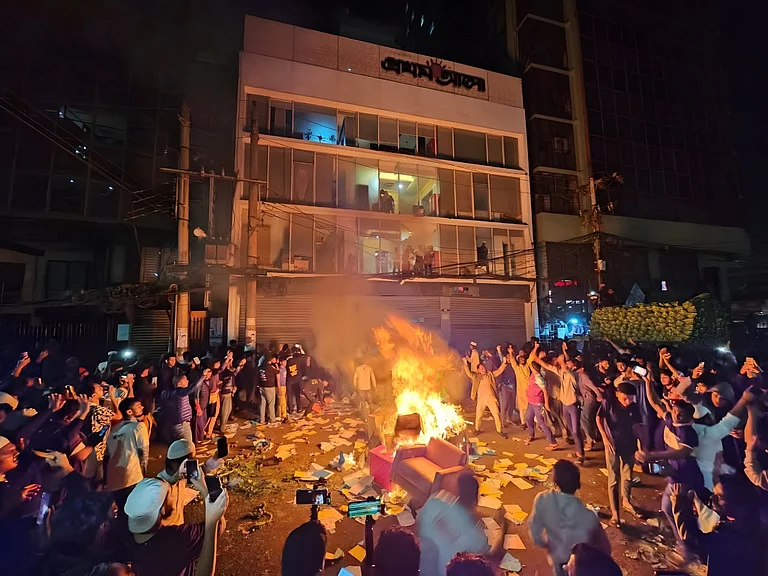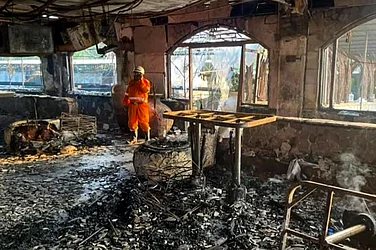“In many ways, writing is the act of saying I, of imposing oneself upon other people, of saying listen to me, see it my way, change your mind. It’s an aggressive, even a hostile act. You can disguise its qualifiers and tentative subjunctives, with ellipses and evasions—with the whole manner of intimating rather than claiming, of alluding rather than stating—but there’s no getting around the fact that setting words on paper is the tactic of a secret bully, an invasion, an imposition of the writer’s sensibility on the reader’s most private space.”
—“Why I Write,” Joan Didion, The New York Times Magazine, 1976
And that space remains a contested one, a space that we must respect and cultivate enough sensibility to enter. Perhaps there is merit in returning to the old ways of storytelling and of reading those stories in print. With rigour. With time. With imagination. To answer that basic question—why I write.
A lot of it is needed now because the digital era has brought in its wake a world order governed by post-truth narratives and held together by algorithms that disregard divergent points of view. There is, therefore, a case to be made for stepping out of formats that have been around. Weekly, fortnightly and monthly, etc. With this edition, we step into a ten-day cycle and break free from most magazine cycles to focus more on big issues beyond the daily news cycle. Like composing a classical tune in the day and age of auto-tune that corrects off-notes but kills the very imperfections that make us who we are.
“--What are you?
-To define is to limit,” Oscar Wilde writes in The Picture of Dorian Gray.
These definitions limit our scope as a magazine with imposed comparisons and competitions. The economies of journalism have changed. To counter the flattening of a post-truth world, there must be reinvention, more experiments and more risk. As a magazine, nothing stops us from being more imaginative, more responsible and more inclusive. It means we no longer want to be restricted by proposed definitions of what a weekly should be. We have decided to call ourselves a ‘Decazine’ and use the 10 days to bring out issues that look at society, culture and politics as parts of a whole story. We remain a general interest news magazine that is committed to maintaining credibility in these challenging times.
We have put our faith in the idea of collectives and collaborative approaches to storytelling. It is what the need of the hour. To include and not to exclude, to remind ourselves that our loyalty lies with the story and not with its consumption models dictated by the market. So, we step out and adopt a timeline that allows us to tell a story better to a reader, not a consumer. News has become a matter of headlines and hashtags and some rethinking is imperative for us to make sense of the cacophony that drowns the complexity of the stories, the feelings and, above all, the curiosity that is fundamental in the profession we call journalism.
The death of print media was foretold even as we were preparing to enter the world of news, armed with notebooks and pens. We read Gay Talese and Joseph Mitchell, who wrote for The New Yorker and other magazines. Talese says a reporter must master the “art of hanging out” or spending a lot of time with the subject to get ordinary people to reveal extraordinary secrets. He says the craft of magazine-writing is artful and not impersonalised like what we have now which is more like fast food.
The issue that we are faced with is that contemporary journalism lacks complexity of perspective, outsiders’ points of views and does not inhabit the world of the subject enough to put together a narrative. Of course, there are always budget constraints but we can still negotiate and navigate our way into this new world order of journalism dictated by social media by continuing to make the Decazine an experience. ‘That Frank Sinatra Has a Cold’ by Talese is a classic example of what magazines can do. The fifty-page story that was built with more than 100 interviews has been anthologised and taught in writing classes since it was published in 1966.
Outlook, which started out as a weekly magazine in 1995, with Vinod Mehta as its editor, was all about reshaping prevalent discourses and offering corrective action. It has continued to defy the status quo in many ways. In 2021, Outlook appointed a woman to head its newsroom.
It wasn’t easy but we pulled through the rough time and decided to dedicate our issues to the most pressing questions of our times despite the temptation of doing the usual and playing safe. We decided to focus more on the “why” and “how” of events. We decided to rewrite our mandate. We reached out to artists, poets and writers to be a part of the collective effort of telling a story well. Our covers became our manifestoes. We always say in the newsroom ‘Show, don’t tell’ and that golden rule of journalism is the one we have remembered in our practice.
We believe in the possibilities that solidarities bring. We remind ourselves to remain curious, to question and to stress upon evidence and critical thinking and open ourselves to witness narratives. It is to step out of the hyperreality that is produced and reproduced with post-truth, that is fed by fake news. Like many others like Talese, Didion and Janet Malcolm, we aim to establish our own form, to disrupt and to reconfigure ways of storytelling. There is enough place for all of us to do our kind of journalism as long as we stay true to the story. There is a lot happening in the world. We can’t cover everything. We are aware of that and hence, we have decided to build our own form and format.
Point Blank was one such cover. On December 14, six civilians were killed in Oting in Mon in Nagaland in what has been called a botched-up security operation by the Indian army. Seven more died later in the evening in a firing incident when they went to look for their friends and family members. While newspapers had been reporting it and there was the argument that the news would be old by the time we would come out, we decided to go to Mon, the crime scene, and tell the story of a place that has continued to live under the shadow of the Armed forces (Special Powers) Act (AFSPA), along with other such places. The cover of the issue was a photo of the bullet-shattered screen of the vehicle that was carrying the men back home from the mines in Tiru where they worked. We turned to poets, to writers and to people to help us make sense of the loss, of politics and of killings.
That’s how we continued. With defiance and faith.
This issue is dedicated to the identity question in the three states in the Northeast that are going to the polls this month. With this, we continue to break barriers and rules that hold us back. We hope you will continue to read our stories. And we promise that we will enter your space with responsibility and sensibility. With emotions and facts.

























